#pan representation
Text

Obsessed with this bit in the new Heartstopper update <3
#michael holden my beloved#and also happy ace tori coming out to everybody!!#we waited for so long but it was worth it#i loved this spring siblings interaction#michael holden#tori spring#charlie spring#pan representation#ace representation#pansexual#asexual#sprolden#alice oseman#osemanverse
55 notes
·
View notes
Text
I want to prove a point
Like or reblog if you like Edelgard and recognise that she’s bi/pan and/or are bi/pan yourself
#fire emblem#fire emblem three houses#fe3h#fe16#black eagles#crimson flower#fire emblem three hopes#fe three hopes#scarlet blaze#edelgard von hresvelg#edelgard#edeleth#edelbert#edelthea#bi representation#💖💜💙#pan representation#💖💛💙#lgbtqia representation#lgbt#lgbtq+#lgbtqia#I’ve been seeing the stupidest discourse#So let’s show love to both El and the bi and pan communities
355 notes
·
View notes
Text
12 Autumnal Reads With Pan Rep
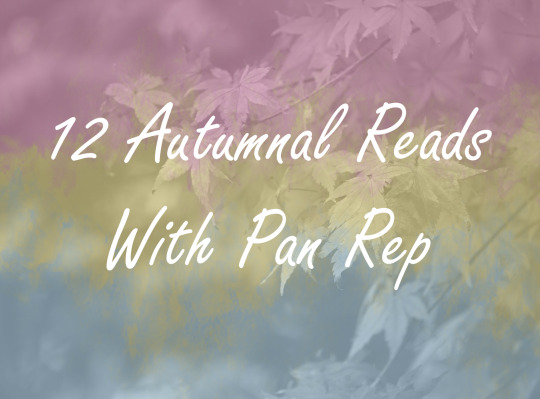
As the days grow longer in the Northern hemisphere we don more layers, grab a hot drink, and say goodbye to summer. While maybe too cuddling up with a book. In similar fashion to the past for Pan Pride Day with wintry stories, and Pan Visibility Day for sunny reads, this time I’ve put together a list of examples offering pan rep set around the autumn season. Across demographics, several genres, and various lengths, the cozy to murderous, feasibly one will fit that next read. But no matter what may suit one’s tastes and whims, as always happy reading! (For content notes please see my reviews on Storygraph.)

A Strange and Stubborn Endurance by Foz Meadows, boasting a gorgeous autumn leaf themed cover, is a hefty first installment in the fantasy series the The Tithenai Chronicles. An unprecedented surprise diplomatic marriage between nobles Velasin vin Aro (gay) and Caethari Xai Aeduria, (bi/pan) sparks more than attraction. Violence, murder, and a hefty dose of intrigue swirl.
The Adventures of Isabel by Candas Jane Dorsey, the first in the Epitome Apartments Mystery series with a cast of colorful characters, is an offbeat mystery. Opening in September, at its center a coarse Canadian ex-social worker turned clueless amateur detective (bisexual/ambisexual/pansexual). Convinced to investigate the murder of a friend’s granddaughter, more than a case will end up cracking.

All the Things We Do in the Dark by Saundra Mitchell is a YA psychological thriller. Set in small-town Maine in October and told by Ava (pan), a 17-year-old with PTSD who stumbles on the body of a murdered teenage girl. Scared, haunted, and distrustful she’ll sleuth out a killer while trying to hold herself together. Author Saundra Mitchell is also pansexual. Note this is furthermore a title that has been banned in some libraries in the US.
Bride of the Corpse King by Emily Shore is a New Adult dark fantasy retelling of Hades and Persephone. Needing the winnings for her family, Isla Adayra (pansexual) enters the Bone Games. Further to escape a match with a dreadful lascivious Elder, she’ll offer herself to one more powerful the Corpse King. Allysteir accepted his duty of the gods’ Curse, but year after year the cost bearing the spirit of the God of Death weighs heavily. Allysteir doesn’t want another bride, but Isla just might be strong enough to tempt Death and even more.
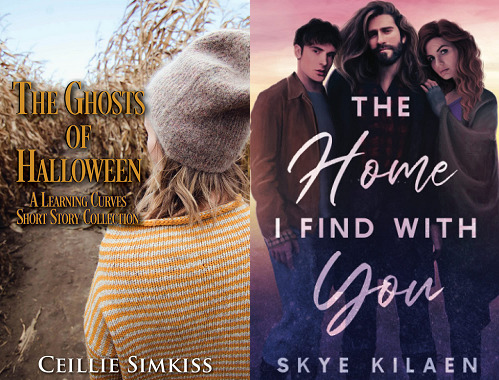
The Ghosts of Halloweenby Ceillie Simkiss takes a light Christmas Carol vibe presenting three bite-sized Halloween short stories about couple Cora (panromantic asexual) and Elena (lesbian) from the Learning Curves series, I previously mentioned in my wintry post. Expect more of what makes this romance series a treat. Author Ceillie Simkiss is also panromantic asexual.
The Home I Find with You by Skye Kilaen is a hopepunk polyam romance set in the aftermath of a second civil war in the United States. Van (pan) the lead defender for a circuit of towns in rural Colorado with his girlfriend Hadas meet Clark (gay,) after Clark shows up unexpectedly in the aptly named Freshtown. As a previous threat and winter also approach, this is a hopeful title centered on people and kindness in spite of violence that may leave the reader feeling warm inside as well. Author Skye Kilaen is also bi/pan.

How to Find a Missing Girl by Victoria Wlosok, a fresh debut YA thriller, features an amateur teenage sleuth Iris Blackthorn (cis pansexual) with two of her friends, Sammy Valdez-Taylors (cis lesbian) and Imani Turner (non-binary lesbian). The trio forms a sapphic detective agency out to solve the disappearance of two people close to Iris as the clock ticks down during the Louisiana autumn. Author Victoria Wlosok is also pansexual.
Sweet to the Core by Amy Aislin set in a small seaside town in Maine is a romance novel between Dev (gay) who owns his own bakery and his cousin’s best friend Clark (pansexual) a wildlife biologist. Dev’s harbored a crush on Clark since childhood. Clark is usually a no-strings-attached guy. But set aside the pumpkin spice and enjoy another staple of the autumn season— apples. When the two team up entering an inaugural baking contest with a sizeable cash prize, mouthwatering baked goods aren’t the only thing that is very sweet.

Trick or Treat by Sydney Blackburn is good if you’re in the festive mood for a sweet little, short story Halloween treat featuring Drew (genderfluid pansexual) and David (cis bisexual) meeting on All Hallows’ Eve.
Vampirella from horror host to heroinesince 1969 has become a sensual pansexual icon enthralling comic readers across the globe. Including me with Vampi having the honour of being the first pan character I knew of. If you need some direction on what to read, SYFY has a Pull List for the Legacy of Vampirella. (Though I’d skip anything by Warren Ellis.)

Wild and Crooked by Leah Thomas has Kalyn and Gus two teenagers that become unlikely friends despite a decades old murder that connects them. Set in small-town lush Kentucky autumn with a smell “like sticky cinnamon”, the slow burn here isn’t romance— but a mystery. There’s abundant queerness: Kalyn likes girls. Gus questions and is regarded as pansexual by many readers and critics to quote “When it comes to people, I care about personality before anything else, and gender’s another characteristic that factors into that. Maybe that does land me in one queer realm or another”. Plus, his mother has a female partner. Too note, garnering young adult award nominations, this is another title that has been listed among book challenges.
The Witches of Portland series by T. Thorn Coyle brings readers an urban fantasy with a social justice basis and dash of romance. Each installment focuses on different members of the Arrow and Crescent coven in Portland, Oregon. If you’re intimidated by the full nine-volume set don’t worry, the books also can be read as standalones. Author T. Thorn Coyle is also bi/pan/queer.
By Dusk (Book 7) set around the autumn equinox features coven member Moss (pansexual) an environmental activist working to prevent pollution of the Willamette. And new to Portland, the rich, on the surface carefree party girl Shaggy. The two previously hooked up at a festival but might have more.
By Dark (Book 8) set in the last week of October thru Dia de Los Muertos features coven member Alejandro (bisexual/pansexual) an IT consultant entering a midlife crisis and his likewise polyamorous partner Shekinah (queer) a graphic designer and Kundalini yoga devotee. But when a friend of Shekinah’s starts having terrifying visions that also besiege Alejandro, it’s an interfaith all-hands-on-deck to uncover dark secrets and affect something terrible afoot in Portland.
21 notes
·
View notes
Text
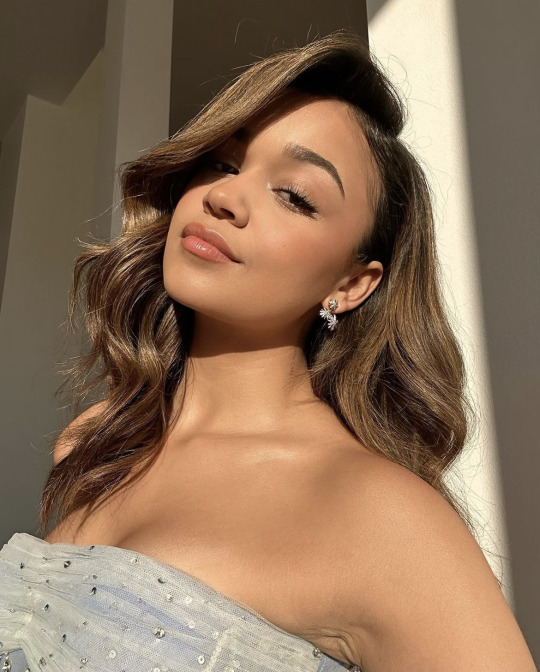

she is a goddess
via: madisonbaileybabe on ig
#madison bailey#actress#pansexual#pansexual icon#pansexual rep#pan representation#pan rep#pansexual representation#lesbian#nmlnm#sapphic#wlw post#wlw#kiara#kie#kiara carrera#outer banks#obx#여자#woman#mujer#여신#goddess#diosa#pretty woman
6 notes
·
View notes
Text

Happy Pan Pride Day!
I only have a couple fanfics with pan characters at the time of scheduling this, but I dream a dream of having more rep in the future. ❤️
Fandoms:
Baldur's Gate 3
Dragon Age: Inquisition
Darkest Dungeon
#pansexuality#pan pride#pan representation#pansexuality pride#pansexuality representation#it's also panromantic pride day! so shoutout to my homies
0 notes
Text
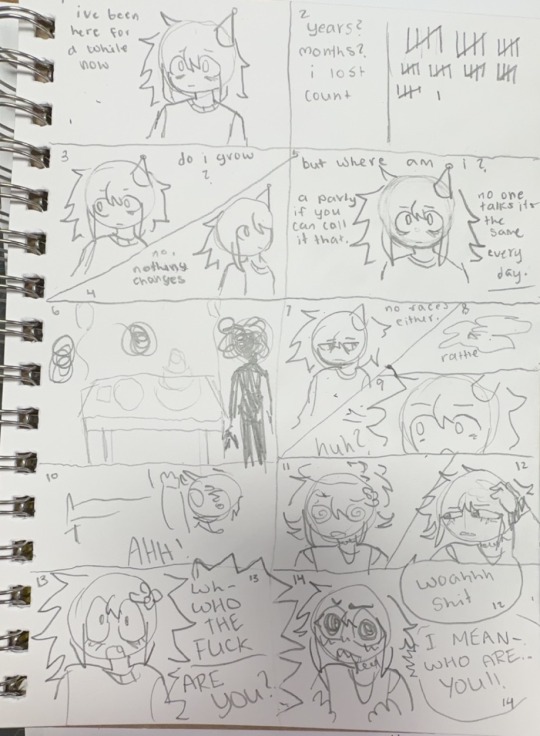
part 1
#lgbtqa#lgbtqiia+#lesbian#asexual#queer representation#queer artist#comics#web comic#original comic#comic art#mini comic#my comic#comic panels#art#lgbt representation#lesbian representation#pan representation#pansexual#oc#oc art#ocs#my ocs#oc artwork#my oc art#orginial character#original character#original content#original art
0 notes
Text
the amount of serotonin that my brain produces when I see those two fucked up gay men is unbelievable
#i'm talking about#huskerdust#aziracrow#stolitz#i love them on unimaginable levels#side note:ik that blitzø and husk are pan and that crowley and azi are far and beyond the human conception of gender and sexuality#but i think it's funnier like this#i truly love the representation they all give to everyone of every gender and sexuality
169 notes
·
View notes
Text
A celebration of Joey Batey offering TV show writers a pure masterclass on how to write a queer character with a queer audience in mind.
Can I just say how much respect and appreciation I have for Joey, that he went above and beyond in term of queer representation, by bringing some much needed attention towards people on the aromantic spectrum, and making gender a complete romantic/sexual (and even queerplatonic) non-issue?
I mean, imagine that you are part of a show with a young and powerful canonically bisexual lead, Ciri, who is at an age where people might start exploring their own sexuality, slowly figuring out who and what they like, etc.
And suddenly, you're offered to also be playing another queer lead character, with a male love interest - while knowing it will be the very first time that the audience will be officially introduced to the idea of Jaskier being queer...
And, instead of going with the more familiar, and often expected:
"A man that's always been with women before, now finds himself romantically and sexually attracted to a man, and starts questioning his own sexual identity..." coming out story...
You find yourself with a unique opportunity to go a bit further, to explore more specific and lesser known LGBTQ+ themes, and to delightfully surprise your queer audience!
You can take a full dive into the wonderful world of Queerdom, by exploring a different - yet just as equally important and significant - coming out story!
i.e.
"A usually aromantic person, that has always experienced squishes, smushes, and possibly meshes before, finds himself experiencing a (sapio)romantic crush for the very first time, and starts questioning his romantic identity..."
Of course, a lot of people in the audience will probably miss this.
The monosexuals that have been conditioned to believe that gender must always play a role in how one experiences romantic and sexual human attraction - will likely be paying more attention to how Jaskier is showing an interest in a man.
People that are used to equating "falling in love" with "romantic attraction", might miss the significance and importance of Vespula specifically using the word crush to refer to Jaskier's current attraction towards Radovid.
People that typically see non-gender-related orientations as "mere preferences", or have simply never heard of them, might miss how Jaskier goes on and on about how "emotionally intelligent and insightful Radovid is" , with a look of vulnerability and wonder, putting emphasis on how different he feels about him.
People that were taught to see emotional relationships according to the "platonic vs romantic" binary - with a strict idea of what each means and implies - may not be familiar with what queerplatonic relationships are, and will interpret Jaskier saying that he loves Geralt "platonically" as meaning that he's not as deeply and strongly in love with him as one might usually expect a romantic partner to be.
They'll be unaware that there are committed life partners out there - that would go to the end of the world for each other and perhaps even share sexual intimacy together - that don't have any romantic feelings for each other whatsoever.
Romance does not mean "being in love", romance means "being in love in a romantic way".
And it is not the only way.
To aromantics and greyromantics - and even to romantic people that also have the capacity to fall in love in non-romantic ways, such as yours truly - queerplatonic and alterous relationships aren't "lesser than" romantic ones, they are different.
And Radovid... is different.
Radovid is no better, nor worse, than a hammer...
But he's a spoon.
He's a romantic connection that is completely new, exciting and intriguing to explore for Jaskier!
According to Joey Batey, as a sapioromantic panromantic pansexual, Jaskier finds himself developing a strong sapioromantic and sapiosexual connection with Radovid.
Jaskier is representing people that aren't romantically or sexually affected by a partner's gender in the way that they experience sexual atttraction, and people that experience a lot of tertiary attraction when falling in love, while very seldom ever being able to love others in a romantic way (sapioromantics / greyromantics... ).
Jaskier is a queer character that was truly created with a queer audience in mind!
He was created so that all of us that don't see or experience love according to the platonic vs romantic binary.
All of us that are hyperaware of those other forms of attraction (tertiary, aesthetic, sensual, etc.) that one can experience for another human being.
All of us that don't see or experience romance or sexuality as something that ties into their partner's gender.
Could finally see themselves in a character on screen.
Of course, you still need characters that experience their sexuality while feeling like the gender of their romantic and sexual partners matters - including those that love all genders... Desperately so!
First, because all members of the queer community matter and are equally as important and valuable. Rejoicing over Batey diving into lesser known and familiar representation doesn't mean that familiar and better known representation should not be encouraged and celebrated as well!
This is not a "there should be less gay character on TV to make room for more aromantics and asexuals instead" post.
This is a "we need queer identities people are less familiar with in addition to proper gay, lesbian and bisexual representation" post.
And second, because you still need characters that don't stray too much from the platonic v.s. romantic binary, too - and the usual social conventions tied to romance and sexuality - so that non-queer audiences can more easily connect, and empathize with, the queer community.
Because, when the existence of bisexuality already is something that monosexual people often have a hard time understanding, acknowledging, or even believing in...
Well, going:"By the way, I'll have you know that you can totally want to have sex with, live, and raise children with someone you've got platonic feelings for, too!"
You might accidentally lose them.
And if you try to explain that some people are unable to romantically connect with anyone, unless they get specifically attracted to their intellect (often combined with their aesthetic looks)!
That's likely going to be even worse!
And this is where Batey's pure genius comes to light.
Because he's just shown that you can find a beautiful and organic way to explore queerness more in depth - totally stepping away from the usual relationship conventions and specifically addressing your queer audience - simply by using a vocabulary that said queer audience will understand and connect with.
You can make it clear that the character is on the greyromantic spectrum, by having Vespula state that she's never ever seen him with a crush before!
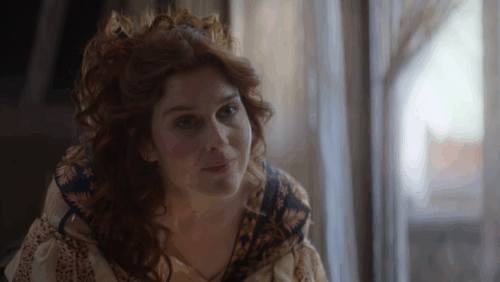
You can put the emphasis on him being more specifically sapioromantic, by having him dreamily go on about how Jaskier perceives Radovid's intellect.

And, if Batey is to be believed - and he's been exploring the idea of Jaskier being queer since the very beginning of the show (without any clear response from the writers or producers regarding Jaskier's sexuality) - then, by making it clear that he loves Geralt platonically in Season 3, he's also allowing us to revisit all the scenes between Jaskier and Geralt from Season 1, while enjoying them through an aromantic lense.
Someone on the aromantic spectrum watching that scene might thus find themselves deeply connecting with the strong platonic squish (although it could also be a mesh) that Jaskier immediately experienced the very first time he saw Geralt...
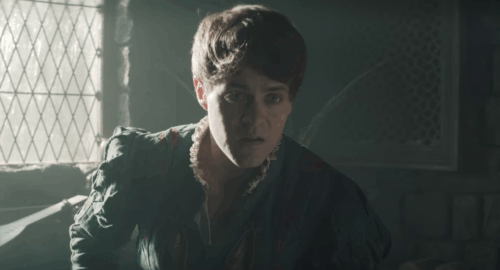
You can see Jaskier as specifically believing himself to be Geralt's best friend in the whole wide world, and instinctively reading into Geralt allowing him to physically/sensually touch him (rubbing chamomile onto his lovely bottom) as him possibly desiring a queerplatonic connection with him also.
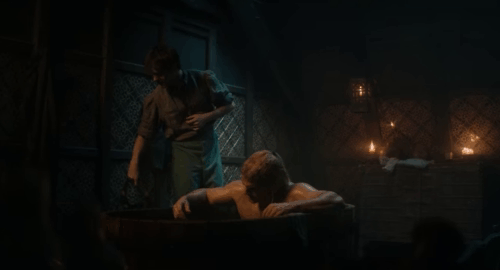
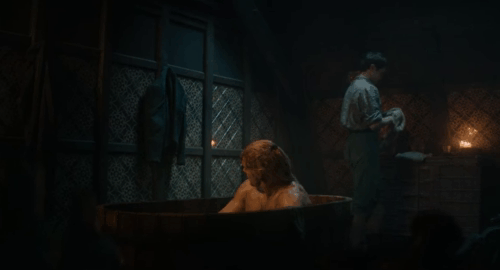

And, the scene where he's suggesting to Geralt that they could get away for a while, head to the coast together...
Where he mentions that life is too short not to do what pleases you, and admits that he's trying to work on what pleases him...
Look, the fact is that there's always been aromantic and greyromantic people experiencing tertiary forms of love and attractions for other people long before we had any words to put on those emotions, desires and needs.
So, it's rather easy to see Jaskier as someone that is experiencing a powerful alterous attraction for his best friend, and realizing that what pleases him the most, is the idea of them sharing a queerplatonic or alterous relationship together...
It makes sense to interpret what Jaskier is saying as him trying to express and articulate the love he feels for Geralt the best he can - implying that Geralt is what pleases him - while trying to ask Geralt if he also feels the same way...
Sadly, Geralt doesn't quite get it; likely because he's also romantically and sexually attracted to Yennefer and, when he loses her, instinctively throws all his own hurt and heartbreak at Jaskier - blaming him for everything that (he believes) lead to that loss!
And just because the break up Jaskier experienced wasn't a romantic one doesn't make it any less devastating.
Poor loving bard was making plans for them to continue to travel and enjoy their time together as the platonic boyfriends he believed them to be, and Geralt told him that all Jaskier had to offer him was a giant pile of shit that he kept shoveling his way!
There's been a lot of alterous and/or queeplatonic subtext since Season 1 (that could also read as romantic, but should never be used as evidence or proof of romance if we were talking about a real life partnership).
And, while I do acknowledge that queerbaiting has been messing with our ability to perceive and appreciate those relationships as such, I do think that, canonically establishing Jaskier as a sapioromantic, at the very least, clearly addresses the reasons why Jaskier was behaving in such an amorous way with Geralt without being romantically in love with him.
For once, instead of mocking the queer audience for "having mistakenly read two same-gender close friends as being romantically attracted to each other" (while doing as much as they can to suggest romance to keep them hooked!), they are canonically establishing Jaskier as a sapioromantic, with him experiencing his first romantic crush with Radovid.
The show's dialogue is telling people on the aromantic spectrum that "Yes, Jaskier is one of you. He gets squishes, meshes, lushes, and can desire a queerplatonic relationship with a best friend he's got strong platonic feelings for also."
You can speak to your queer audience, without fully risking alienating your non-queer audience, by simply using clues, and a language that your queer audience understands.
And I will forever be grateful to Joey Batey for having understood it, and having so skillfully managed it.
As someone who is ambiamorous, panalterous, panromantic, demisexual, and pansexual, all the nuances and details he brought to Jaskier's queerness was a pure delight, and spoke to me in a way that no TV show character has ever spoken to me before (except, perhaps, in "Sense8", but the whole show itself was about what it meant to love and be human, with main characters sharing a supernatural psychic bond making them more likely to open themselves to all the queer forms of love... whereas shows like "The Witcher" is of a more mainstream fantasy show).
I wish I had a way to contact him to tell him thank you, from the bottom of my heart, for breaking gender boundaries, and "platonic vs romantic" boundaries with Jaskier, and offering us a character that is one of the purest, most beautiful, and most perfectly balanced love song to queerness that one could have written and sung about!
Jaskier is a queer representation groundbreaking masterpiece on a show such as this.
That representation is as intelligent, insightful, and sharp as Prince Radovid himself.
And Extraordinarily Things said more about Jaskier's feelings, issues, and vulnerabilities than any piece of dialogue ever could have, and had me weeping my eyes out by the time Jaskier sang about how he finally felt like he was enough...
Well done Joey, you absolutely brilliant and deeply empathetic real-life bard and poet, well done...

#Jaskier#The Witcher#Sapioromantic Jaskier#Pan Jaskier#Pansexual Jaskier#Panromantic Jaskier#Greyromantic Jaskier#Sapioromantism#Greyromantism#Panromantism#Pansexuality#Queer representation#LGBTQ+#Queer#Joey Batey is a genius#Please ask him to guide you in addressing Ciri's bisexuality as well!#Queerplatonic#queerplatonic relationship#My posts#My thoughts
281 notes
·
View notes
Text
June 25th Pride Month Art
Argos My Beloved <3
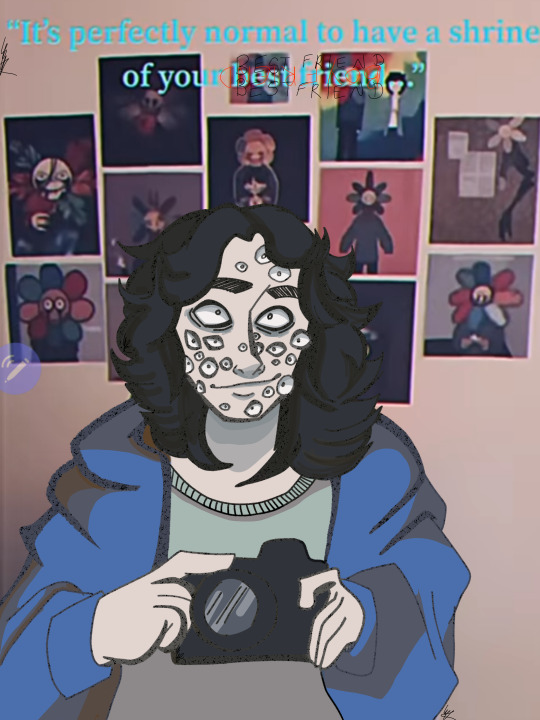
i would have made my own background, but ive been so drained lately so I directly sreenshotted the shrine Ashur made since it was very well made in the first place.
I love Argos and Mr. Plant so unironically
follow my progress through the rest of the month on this post
and don't be afraid to suggest who or what i do next for pride month
#lgbt art#lgbtq artist#lgbtq community#art#lgbt representation#lgbtq rights#gay pride#pride month#pan pride#pansexual pride#pride2023#mr. plant#argos#ashur gharavi#twomp#world of mr plant#argos x mr plant#only 4 more days of daily gay art from me#enjoy it while it lasts?
394 notes
·
View notes
Text
I'm loving the visibility for us this year!
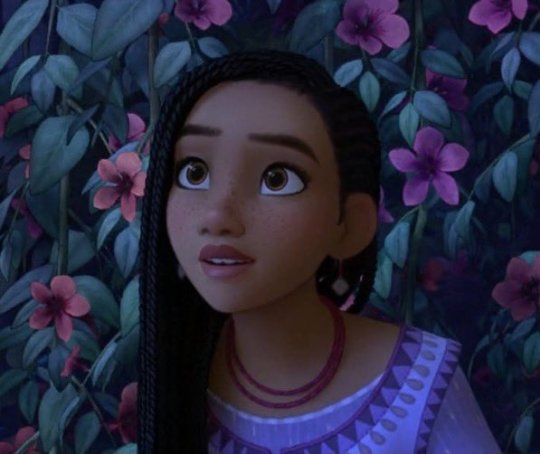



Princesses, Mermaids, Fairies, and Horror!
You go girls!💫🧚🏾♀️🧜🏾♀️📺
#original characters and reimagined alike#we love to see it#the representation#it's amazing#the little mermaid#wish#amanda the adventurer#peter pan and wendy#peter pan#peter and wendy#disney#tlm#the little mermaid 2023#indie horror game#amanda and wooly#wooly the sheep#black girls killing it#black girl magic#tinkerbelle#yara shahidi
306 notes
·
View notes
Text
“the lgbtq+ community is over-represented in media, specifically in regard to sexuality” is a statistical error. riverdale, who confirmed 90% of its characters to be gay or bisexual by the series finale, is an outlier and should not have been counted (but should be normalised).
#riverdale#queer#lgbtq#queer representation#queer rep in media#likr#saw someone on reddit say ‘90% of characters are bi now’ PLEASE TAKE ME TO YOUR UNIVERSE#they were like even everyone in hsmtmts is queer#(it’s more 40-60)#like there’s no agenda being pushed there are still other straights you can watch (somewhere)#it’s just that#not everyone is straight#but also trans rep and gender diversity and ace/aro/pan rep is appalling and y’all deserve way better#in number#but also there are Negative Stereotypes
77 notes
·
View notes
Text
OFMD finding that fine line between everything. Is the queerest show and never discusses it. Can be fucking hilarious but not in a silly way. Doesn’t take its genre or itself seriously whilst redefining representation.
#etc#et cetera#comedy? yes dramatic? yes#over the top and the gentlest thing#it continues to baffle me how this show is real#ofmd#our flag means death#queer representation#lgbt#lgbtqia#lgbtqia+#trans#gay#pan#nonbinary#aro#ace#queer#renew as a crew
70 notes
·
View notes
Text

#My art#lgbtq positivity#LGBallT#lgballt#lgbtq#gay food jokes#Lgbtq food puns#panseuxal#pan pride#pansexual positivity#bisexual#bisexual positivity#lgbt representation#lgbtq community#Lesbian#wlw#lesbian pride#Gay#gayart#gay ball#lesbian ball#Pan ball#Bi ball#Aromantic#arospec#aromantic awareness#aro positivity#asexual#asexual representation#If anyone else can think of any other bad gay puns reblog/ comment
582 notes
·
View notes
Text
transmasculine

i saw someone on tumblr saying something about how they wanted more representation for transmasculines with long hair/who like having long hair.
soooo, i drew one. this is Evan. he’s a transmasc guy, and uses he/him pronouns. he’s also panromantic and asexual.
#transmasc#transmasc pride#trans pride#trans#trans community#transmasc community#transmasculine#transmasculine pride#transgender joy#transmasc joy#transmasculine joy#transmasc representation#trans art#oc#transmasc oc#queer pride#queer community#queer#asexual#ace#ace pride#asexual pride#asexual community#ace community#aspec#panromantic#panromantic pride#pan pride#transmasc with long hair#long haired transmasc
23 notes
·
View notes
Text
“‘we are not only one thing forever. We’re allowed to change at any point in our lives. We don't have to be stuck with a label someone else assigns us. Gods, we don't even have to stick to a label we give ourselves. So, you can be bi or pan or a lesbian or queer, and tomorrow you may have a better sense of who you are, or tomorrow you can be a big ole queer mess and figure it out fifty years from now.’"
-Rick Riordan and Mark Oshiro, The Sun and the Star
#quotes#lgbtq representation#lgbtq books#book quotes#rick riordan#mark oshiro#lgbtq#nico di angelo#will solace#mlm#gay#bi#pan#lesbian#queer#the sun and the star#the sun and the star quote#tsats#tsats quote
102 notes
·
View notes
Text
Captain Hook and Improving Disability Representation in Modern Media
Ask anyone on the street to name a canonically disabled character, and there are a few who immediately come to mind—Daredevil, Professor X, Bucky Barnes, Geordi La Forge, and both Anakin & Luke Skywalker just to name a few. Hook should also make that list but ironically, even though his very NAME suggests his disability, it’s easy to forget that he is, in fact, an amputee.
In part, I think this is because historically, it has been intentionally glossed over in many film and TV versions. He is almost never shown without the iron claw attached at the end of his arm, and even the subject isn’t spoken about much in film. For example, in Spielberg’s 1991 film, Hook, and in Fox’s Peter Pan and the Pirates (1990-1991) we see a few shots of Hook sleeping in his bed and yet still wearing his prosthetic. Likewise, no matter how many times Disney’s (1953) Hook gets his clothes shredded by the crocodile, we never see his injured arm fully laid bare. (In fact, in the few shots where his left shirt sleeve has been torn off, the hook seems to be almost physically unable to be separated from his body. The skin simply stops near the wrist and then we have the iron base of the claw with no sort of harness to actually keep it in place.) Even when Peter begins to tell the story of how he cut off Hook’s hand to the mermaids, he barely gets a few words in before the audience’s attention is purposefully redirected to the captain himself in all of his glorious villainy so we don’t get to thinking too much about the fact that the entire reason he has that hook to begin with is because our hero seriously injured him. We aren’t meant to think of Hook as much beyond the stereotypical “scary amputee villain” character because if we examine him too closely, we’ll start to humanize him and risk asking questions that the filmmakers aren’t prepared to answer. (How did the hand loss occur? Was it a fair fight? Who started it? How much should we sympathize with Hook? How much should we trust Peter?)
More recent visual media has, however, made some improvements in this area. In particular, I’d like to take a closer look at two very different (but equally important) portrayals of Hook that have occurred in the last few decades—Jason Isaacs’ Hook (from P.J. Hogan’s 2003 Peter Pan) and Disney’s more recent spin on the captain in Jake and the Neverland Pirates (2011-2016).
Isaacs’ Hook—arguably the most Barrie-like incarnation we’ve seen on film—is introduced to us in a way unlike any other. He’s not standing proud out on the deck barking orders at his crew or strolling through the forest in search of Pan’s hideout (though we certainly see those moments later). Instead, our first glimpse of the captain shows us who he is underneath all the silk and ceremony—a troubled man pained both mentally and physically by the loss of his hand.

Looking disheveled, he wakes from a dream about Pan and slowly raises the injured arm for the audience to see. It isn’t the nice, smooth stump one would expect to see if a surgeon had performed the operation. Instead, it looks as though the hand had been crudely cut away. The skin is uneven and scarred. And while we aren’t meant to pity Hook here—the man can clearly take care of himself—we are supposed to see his humanity and recognize that he has experienced trauma. Suddenly, he isn’t just a villain anymore—he’s a person who not only experienced immense physical pain when he lost his hand but continues to experience discomfort daily when he dons the leather harness that must be wrenched tightly into place to keep the claw secure during battle.

It’s a brief scene overall, lasting only a few minutes, but it adds a lot to his character and the story as a whole. His disability isn’t the main focus but it is openly and respectfully acknowledged. This version of Hook—intended for older children and adults—shows us the darker, more complicated parts of the Captain in a way that hits unsettlingly close to home. Suddenly, his intense responses to the crocodile (and ticking) seem less comical and more akin to the PTSD response one might expect from a soldier who lost a limb in wartime from an explosion hearing fireworks go off.
Another more recent take on Hook that does a good job of normalizing his status as an amputee character is Disney’s Jake and the Neverland Pirates series. While many adult Hook fans have complained about the series making the character too silly, I believe that for the intended audience (pre-school kids), it actually does a great job of showing that disability isn’t something to be feared or made fun of. Taking their target audience into consideration, Disney did a lot in the Jake series to tone down Hook’s scarier elements both in terms of his personality (more of a bully with self-esteem issues than a truly dangerous villain) and his physical appearance (He is visibly less angular with more rounded edges to everything from his facial structure to the claw itself). In an interview, Corey Burton even explained how he vocally changes up a few things between his “traditional” Disney Hook sound and the voice he uses for Hook in the show. He also mentions in one interview that some people were concerned that “a guy with a hook for a hand might be too scary” for little ones, but the series makes it seem so natural that it really doesn’t feel like a big deal. While in the original film, we only see Hook changing out the claw once (for a fancier golden hook), in the Jake series, it happens so frequently that there is literally an entire episode (“Captain Hook’s Hooks”) that is focused on all the different attachments he has and includes a fun song about them.

Although some of the “hooks” are rather outlandishly imaginative and altogether improbable if not impossible in real life, there are many that DO mimic actual modern prosthetic attachments (a hammer, for instance, or attachments that allow for recreational activities like sports or fishing). In fact, the captain’s set of hooks are made out to be so interesting and fun that Disney Jr. actually had an online game called, “Ready, Set, Hook,” where the player had to help Hook and Smee choose the right prosthetic attachment to complete a set of challenges. What’s more, they even released a set of toy “hooks” for children so they could pretend to be the one-handed captain himself!
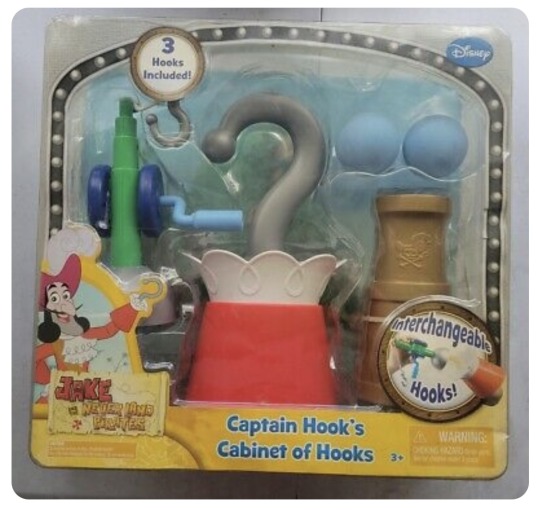
Jake’s version of Hook may not be the intimidating character we have come to expect, but he’s a likable guy with a cool set of hooks who bridges the gap in explaining physical disability and prostheses to young children. In the show, Hook doesn’t feel “other” for missing a hand; rather, switching out prosthetic attachments are so much a part of who he is that nobody thinks twice about it.
Overall, Hook has come a long way in terms of disability representation on-screen, and I hope we continue to see more of it in future productions.
#captain hook disney#disney peter pan#disney#captain hook#disney villains#peter pan#james hook#captain james hook#jason isaacs hook#peter pan 2003#captain hook jason isaacs#Jason Isaacs#jake and the neverland pirates#disability#disability representation#amputee#amputee representation
434 notes
·
View notes